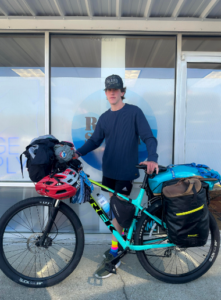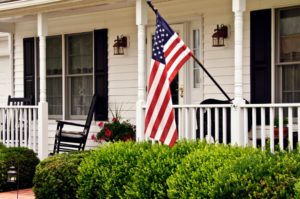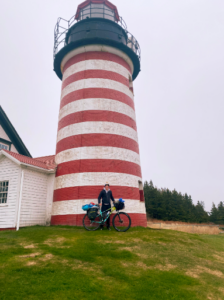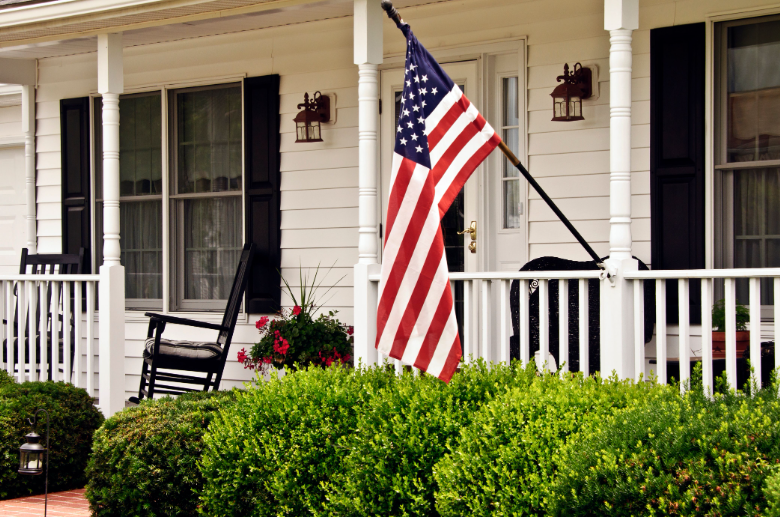Where The Heart Is
Homes For Our Troops Builds and Donates Adapted Homes for Injured Veterans
Writer / Melissa Stalb
Photography Provided
At 19 years old, Luke Walker of Louisville knew he was going to join the military. Just five days from shipping off to basic training, he learned that some of his medical paperwork didn’t pass the acceptance phase, and 21 days after his denial, Walker set off on the road.
“I was going to make a career out of the military and I was just devastated,” he says. “I didn’t know what I was going to do with my life. I just started traveling. I went to Montana, Colorado, and lived in the Caribbean for a while. I was a whitewater raft guide and learned a little bit about bike touring. I even lived in a tent for some time.” 
Walker decided that if he couldn’t join the brotherhood he had always dreamed of, perhaps he could help them in a different way.
“A mentor of mine gave me a list of nonprofit military organizations and I researched all of them,” he says. “I wanted to make sure the majority of the money would go directly to veterans.”
He found an organization called Homes For Our Troops (HFOT) with a mission to build adapted homes for disabled veterans across the U.S.
“I liked that they have a list of veterans currently waiting on a home,” he says. “I watched a ton of videos and selected one that I related to.”
His plan included cycling from Key West, Florida, up the coast of Maine, and then across the northern portion of the country to Washington. Walker wanted the trip to be as similar to deployment as possible – no hotels, a $15-per-day budget and a lot of physical activity.
“I wanted to raise $50,000, but by the time I got to Michigan I had to see a doctor and was advised to medically drop out of my plan,” Walker says. “I’m at $5,000 right now but the money wasn’t my main goal. It was a personal challenge and more about raising awareness.”
Despite Walker’s setback, HFOT can use any donation and any awareness to support their mission.
In 2004 a general contractor named John Gonsalves offered to build a disabled veteran a home. The veteran denied his offer at first, but eventually said he would accept it on one condition – that Gonsalves didn’t stop with just him.
Today, 361 homes in 45 states have been built, all specially adapted for each individual veteran.
Tom Landwermeyer, president and chief executive officer of Homes for Our Troops, is a retired Army veteran of 33 years. He has seen firsthand the struggles wounded veterans face when they come home.
“These veterans tend to restrict themselves to a certain area of the home they can move around in,” he says. “[In a typical home] it’s not uncommon to have to walk up a couple of steps to the front door. The doors are narrow and the first thing you see is a flight of stairs up to the second floor. You can’t turn into doorways because the angles aren’t right. Going to the restroom could actually be dangerous and assistance is needed. They sacrificed their freedom and independence for the rest of us. They shouldn’t continue to fight in their own homes. It should be a place of respite.”
Each HFOT home has a single story, at 4,800 square feet, with four bedrooms and two baths. Luxury vinyl floors and minimal thresholds at the doorways allow for smooth and easy access throughout the house.
Light switches are placed lower and electrical outlets are placed higher than a typical home. Countertops are lowered, and the stovetop and sink are roll-under. The master bath has a roll-in shower.
“We want our veterans to access the entire home, and have added things like a roll-in closet in the master bedroom that allows pull-down hangers, and a front-load washer and dryer,” Landwermeyer says.
There are currently more than 40 special applications built inside the home, and HFOT leaders continue to gather feedback and improve upon their next home.
For instance, individuals who have severe burns often have a lot of nerve damage and they can’t always feel water temperature, so showers in every home have a digital thermometer valve for programming temperature.
“Each home has a backup generator that can power the entire home,” Landwermeyer says. “This was a result of a veteran in the Midwest who encountered some storms. Many prosthetics these days need power and when he spent three days without electricity, we learned the importance of a backup generator. Not only that, we did a retrofit and went back to put generators in at every home we’ve built so far.”
It’s only one of the ways HFOT is unique. After handing over the keys, the relationship continues to build.
“It’s not the last you’ve heard of us,” Landwermeyer says. “We promised them a quality home and we’ll fix any issues. We need that feedback on the adaptations and we’re constantly upgrading house plans.”
Keeping in touch allows HFOT to learn all the ways this assistance helps the entire family. For example, 95% of families report a decrease in stress level. Employment rates for caregivers more than double, and for the spouse it nearly triples.
“The most important thing about staying in contact is to help when needed,” Landwermeyer says. “They have those chains taken off, they can accomplish things and do things as a family again, but the home doesn’t take away their injuries. There will be dark times and we can serve as a link to the right support in their area.”
There are currently 70 projects underway and 100 veterans in the application process. Landwermeyer says there are at least another 1,000 severely wounded that would qualify for the program.
 HFOT serves veterans injured in post-9/11 war in Iraq and Afghanistan. Individuals are approved through a special adapted housing grant program through Veterans Affairs (VA). In addition, financial planning is provided for each family to help as they move forward, and the staff at HFOT can walk veterans through each step of the process.
HFOT serves veterans injured in post-9/11 war in Iraq and Afghanistan. Individuals are approved through a special adapted housing grant program through Veterans Affairs (VA). In addition, financial planning is provided for each family to help as they move forward, and the staff at HFOT can walk veterans through each step of the process.
“We have a lady in our office that responds to every message,” Landwermeyer says. “If our program doesn’t fit, she’ll put them in touch with a support organization that can help. We never say, ‘You don’t qualify, goodbye.’ We also have people that know the VA system incredibly well and help with those steps, so just call us.”
HFOT puts 90 cents of every dollar back into the home and services for the veteran. They don’t pay for advertising, and they depend on business sponsorships, individual donations, and individual fundraisers like Walker’s.
“A few years ago we celebrated our 300th home in St. Louis, and the family had a 4-year-old girl and an 8-year-old boy,” Landwermeyer says. “Wayfair donated furniture in honor of our event, and this little girl was sitting on her big four-poster bed with pink and white decorations. One of our staff members asked her what she liked the most, and she said, ‘My dad is going to be able to come in my room and read me a story.’ This is something we can do for the entire family.”
For more information about Homes For Our Troops, visit hfotusa.org.






